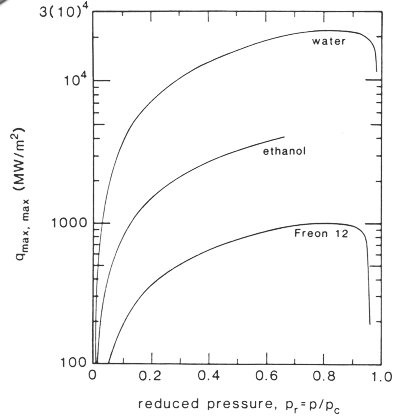High Heat Flux in Japan
Today, I look a gift horse in the mouth. The University of Houston's College of Engineering presents this series about the machines that make our civilization run, and the people whose ingenuity created them.
I'm an honored guest in Tokyo. I'm the only American at a national workshop. The Japanese have been treating me like visiting royalty. I've just given the keynote address. Now I listen to talks in Japanese while an interpreter whispers in my ear.
I'm here because of a homework problem I once wrote. I asked students how much heat could possibly be carried away by the boiling water in a steam boiler. I asked them to count the molecules leaving a water surface. Then they had to find how much heat those molecules would carry.
The result says that boiling water can take as much as 200 megawatts away from each square foot of heater. That's far more than anyone thought possible. So I went to the man who'd measured some of the highest known cooling rates. I said, "Let's write a paper about possibilities." He agreed. So we showed that equipment could be cooled 200 times better than it is cooled now.
The performance of a nuclear reactor or of a solar tower is limited by the rate we can take energy away from it. So is a computer. The more compact the computer, the more waste energy has to be taken out of its circuits. Improve heat removal in any of these devices, and they'll perform far better.
The reviewers weren't crazy about our paper. It was pretty simple for a technical journal. But they agreed to publish it. After that, American engineers took little notice of it.
But the Japanese said, "Here's a chance to miniaturize and improve reactors, computers, and much, much more." So now I sit in a darkened room listening to the best thermal engineers in Japan. They turn my simple idea around in the light of an overhead projector, and it begins to sparkle. They suggest a dozen ways to make possibility into reality.
I watch the flickering graphs and ponder the myths about Japanese imitation. This radio program has shown me that creativity is a form of recognition. Creative people see side roads that the rest of us miss. Invention is not so much plucking an idea from thin air as it is recognizing an idea out of context. Next year the Japanese will make still smaller and more efficient machines, and we'll wonder why.
Andy Warhol has said that we'll each enjoy 15 minutes of fame during our lives. So I savor my moment until my host interrupts. "Would I say a few words at the reception?" That'll end the ceremony. They'll have given the devil his due. Tomorrow, these Japanese engineers will be back at work. It has been a wonderful visit, but I can only hope the next time I go to an idea session like this, it will be in America.
I'm John Lienhard, at the University of Houston, where we're interested in the way inventive minds work.
(Theme music)
The paper that attracted Japanese attention is
Gambill, W.R. and J.H. Lienhard, An Upper Bound for the Critical Boiling Heat Flux. Journal of Heat Transfer. Vol. 111, No. 3, 1989, pp. 815-881. See: https://engines.egr.uh.edu/sites/engines/files/talks/Gambill-LienhardJHT1989.pdf
Japanese development of the idea is described in the following printed proceedings:
Researches of Boiling Heat Transfer: Recent Development and Its Possibility, Heat Transfer Society, Japan. (A national. workshop organized by the Mechanical Engineering Department at The University of Tokyo, July 20, 1990. ) See esp., 7 papers between pp. 60-96. (in Japanese.)
I first proposed the theory behind the idea as a homework problem in Tien, C.L. and Lienhard, J. H., Statistical Thermodynamics. Revised ed. Washington, D.C.: Hemisphere, 1979, Problem 2.21, p. 55. I then solved it in Tien, C.L., and Lienhard, J. H., Solutions Manual for Statistical Thermodynamics. Washington, D.C.: Hemisphere 1979, p. 13.
It turns out that the basic physics of the problem had been fully discussed (without any reference to high intensity process heat transfer) long before, by
Schrage, R.W., A Theoretical Study of Interphase Mass Transfer. New York: Columbia University Press, 1953, Chapter II.
The limiting heat flux for water at atmospheric pressure is a little over 200 megawatts per square meter, as you can see in the figure below, taken from the Gambill-Lienhard paper. At high pressure it's roughly 20 times that value. It appears that actual systems can be driven to about 1/10th of these limits. That still gives a potential for heat removal that is astonishingly high.
